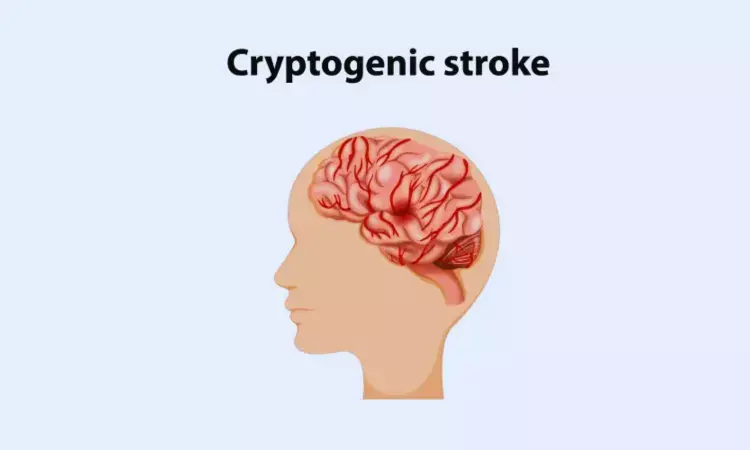- Home
- Medical news & Guidelines
- Anesthesiology
- Cardiology and CTVS
- Critical Care
- Dentistry
- Dermatology
- Diabetes and Endocrinology
- ENT
- Gastroenterology
- Medicine
- Nephrology
- Neurology
- Obstretics-Gynaecology
- Oncology
- Ophthalmology
- Orthopaedics
- Pediatrics-Neonatology
- Psychiatry
- Pulmonology
- Radiology
- Surgery
- Urology
- Laboratory Medicine
- Diet
- Nursing
- Paramedical
- Physiotherapy
- Health news
- Fact Check
- Bone Health Fact Check
- Brain Health Fact Check
- Cancer Related Fact Check
- Child Care Fact Check
- Dental and oral health fact check
- Diabetes and metabolic health fact check
- Diet and Nutrition Fact Check
- Eye and ENT Care Fact Check
- Fitness fact check
- Gut health fact check
- Heart health fact check
- Kidney health fact check
- Medical education fact check
- Men's health fact check
- Respiratory fact check
- Skin and hair care fact check
- Vaccine and Immunization fact check
- Women's health fact check
- AYUSH
- State News
- Andaman and Nicobar Islands
- Andhra Pradesh
- Arunachal Pradesh
- Assam
- Bihar
- Chandigarh
- Chattisgarh
- Dadra and Nagar Haveli
- Daman and Diu
- Delhi
- Goa
- Gujarat
- Haryana
- Himachal Pradesh
- Jammu & Kashmir
- Jharkhand
- Karnataka
- Kerala
- Ladakh
- Lakshadweep
- Madhya Pradesh
- Maharashtra
- Manipur
- Meghalaya
- Mizoram
- Nagaland
- Odisha
- Puducherry
- Punjab
- Rajasthan
- Sikkim
- Tamil Nadu
- Telangana
- Tripura
- Uttar Pradesh
- Uttrakhand
- West Bengal
- Medical Education
- Industry
Migraine with aura associated with young-onset cryptogenic ischemic stroke in women: Study

A new study published in the journal of Stroke showed that the most common cause of young-onset cryptogenic ischemic stroke (CIS), particularly in women and individuals with high-risk patent foramen ovale (PFO), is migraine with aura.
Dropping rates of myocardial infarction and sudden cardiac death amongst young adults, which are also highly correlated with conventional risk factors, as well as the finding that the percentage of CIS has grown, lend credence to this theory. The patients without vascular risk factors and those with CIS are the main causes of the increased incidence of young-onset ischemic stroke.
Stratified by clinically relevant patent foramen ovale (PFO), which is defined by high-risk characteristics of atrial septal aneurysm or significant right-to-left shunt, this study investigates the burden and correlations of modifiable traditional, nontraditional, and female sex-specific risk variables with young-onset CIS.
This study recruited frequency-matched stroke-free controls of the same age and sex from 19 European locations, as well as consecutive patients with recent CIS, aged 18 to 49. The relationship between risk factor counts (12 traditional, 10 nontraditional, and 5 female sex-specific) and individual risk variables, stratified by PFO, was evaluated using logistic regression. Sex and age (18–39 and 40–49 years) were used to stratify the analyses, and population-attributable risk was calculated.
There were 523 patients and 523 controls in this research. Every new traditional, atypical, and female sex-specific risk factor increased the probability of CIS in individuals with CIS without PFO. Every traditional risk factor raised the risk for patients with CIS and PFO, but only nontraditional risk variables remained significant after complete adjustment.
For CIS without PFO, the population-attributable risks for traditional, nontraditional, and female sex-specific risk variables were 64.7%, 26.5%, and 18.9%, respectively. Population-attributable risks for CIS with PFO were 21.8%, 49.4%, and 33.8%, respectively. With population-attributable risks of 45.8% for CIS with PFO and 22.7% for CIS without PFO, migraine with aura was the most important factor, with a greater effect in women.
Overall, this study demonstrates that young-onset CIS is impacted by both classic and nontraditional risk factors, varied by PFO status. Key roles are played by behavioral variables and migraine with aura, by emphasizing the necessity of individualized risk assessment and prevention for young adults.
Reference:
Putaala, J., Martinez-Majander, N., Leppert, M., Tulkki, L., Pirinen, J., Tolppanen, H., Sarkanen, T., Virtanen, M., Jaakonmäki, N., Jäkälä, P., Hedman, M., Redfors, P., Bech-Hanssen, O., Junttola, U., Huhtakangas, J., Ylikotila, P., Lautamäki, R., Schminke, U., von Sarnowski, B., … SECRETO Study Group. (2025). Burden of modifiable risk factors in young-onset cryptogenic ischemic stroke by high-risk patent foramen ovale. Stroke; a Journal of Cerebral Circulation. https://doi.org/10.1161/STROKEAHA.124.049855
Neuroscience Masters graduate
Jacinthlyn Sylvia, a Neuroscience Master's graduate from Chennai has worked extensively in deciphering the neurobiology of cognition and motor control in aging. She also has spread-out exposure to Neurosurgery from her Bachelor’s. She is currently involved in active Neuro-Oncology research. She is an upcoming neuroscientist with a fiery passion for writing. Her news cover at Medical Dialogues feature recent discoveries and updates from the healthcare and biomedical research fields. She can be reached at editorial@medicaldialogues.in
Dr Kamal Kant Kohli-MBBS, DTCD- a chest specialist with more than 30 years of practice and a flair for writing clinical articles, Dr Kamal Kant Kohli joined Medical Dialogues as a Chief Editor of Medical News. Besides writing articles, as an editor, he proofreads and verifies all the medical content published on Medical Dialogues including those coming from journals, studies,medical conferences,guidelines etc. Email: drkohli@medicaldialogues.in. Contact no. 011-43720751


